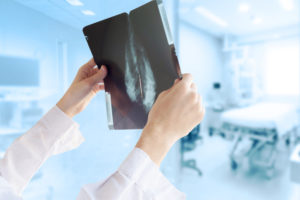 According to a recent article by the American Association for Cancer Research, 16 percent of women will get called back for further testing after their first mammogram, and 10 percent will be called after subsequent mammograms. While the call-back percentage is high, only about 0.5 percent of those women will have cancer.
According to a recent article by the American Association for Cancer Research, 16 percent of women will get called back for further testing after their first mammogram, and 10 percent will be called after subsequent mammograms. While the call-back percentage is high, only about 0.5 percent of those women will have cancer.
What is a False Positive?
False positives can cause anxiety, but ultimately the news for a false positive is good – no breast cancer. Because the area looks suspicious, false positives require follow-up with more than one doctor, extra tests, and extra procedures, including a possible biopsy.
Who is at Risk of Getting a False Positive?
False positives are more common in:
- Younger women
- Women who have a family history of breast cancer
- Women who have dense breasts
- Women who are taking estrogen
If I Don’t Have Cancer, Does a False Positive Increase my Chances of Getting Cancer Later On?
A false positive mammogram doesn’t always mean you’ll get breast cancer later on, but a study by the American Association for Cancer Research does show a correlation between false positives and an increased chance for getting breast cancer within 10 years. There are a couple reasons for the correlation:
- Radiologists might notice something that’s not currently cancerous, but it could become cancerous in a few years.
- Women with dense breasts are at a higher risk for getting false positives, and they’re also at a higher risk of getting breast cancer.
It’s very important for women over the age of 40 to get mammograms to catch breast cancer in its early stages. Call our office at (214) 345-6905 to schedule a mammogram with Southwest Diagnostic Imaging Center.

